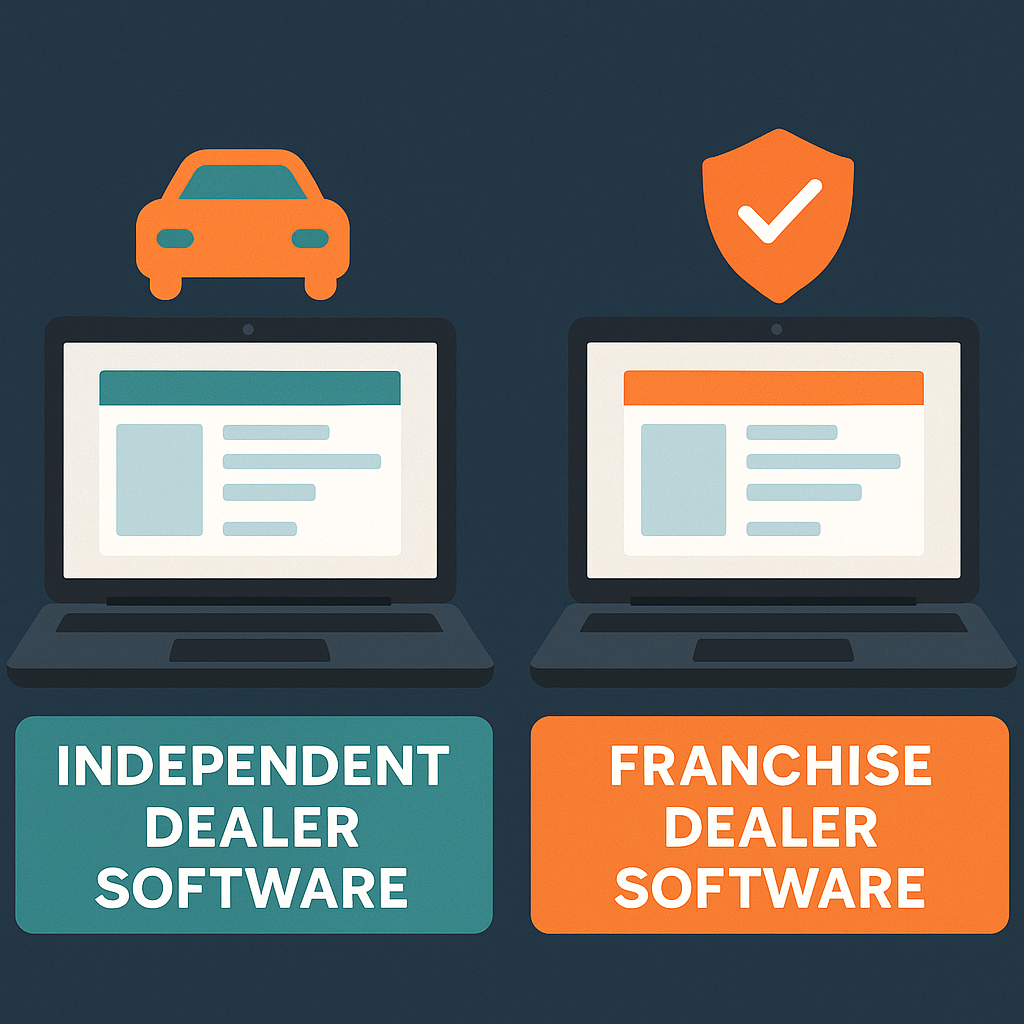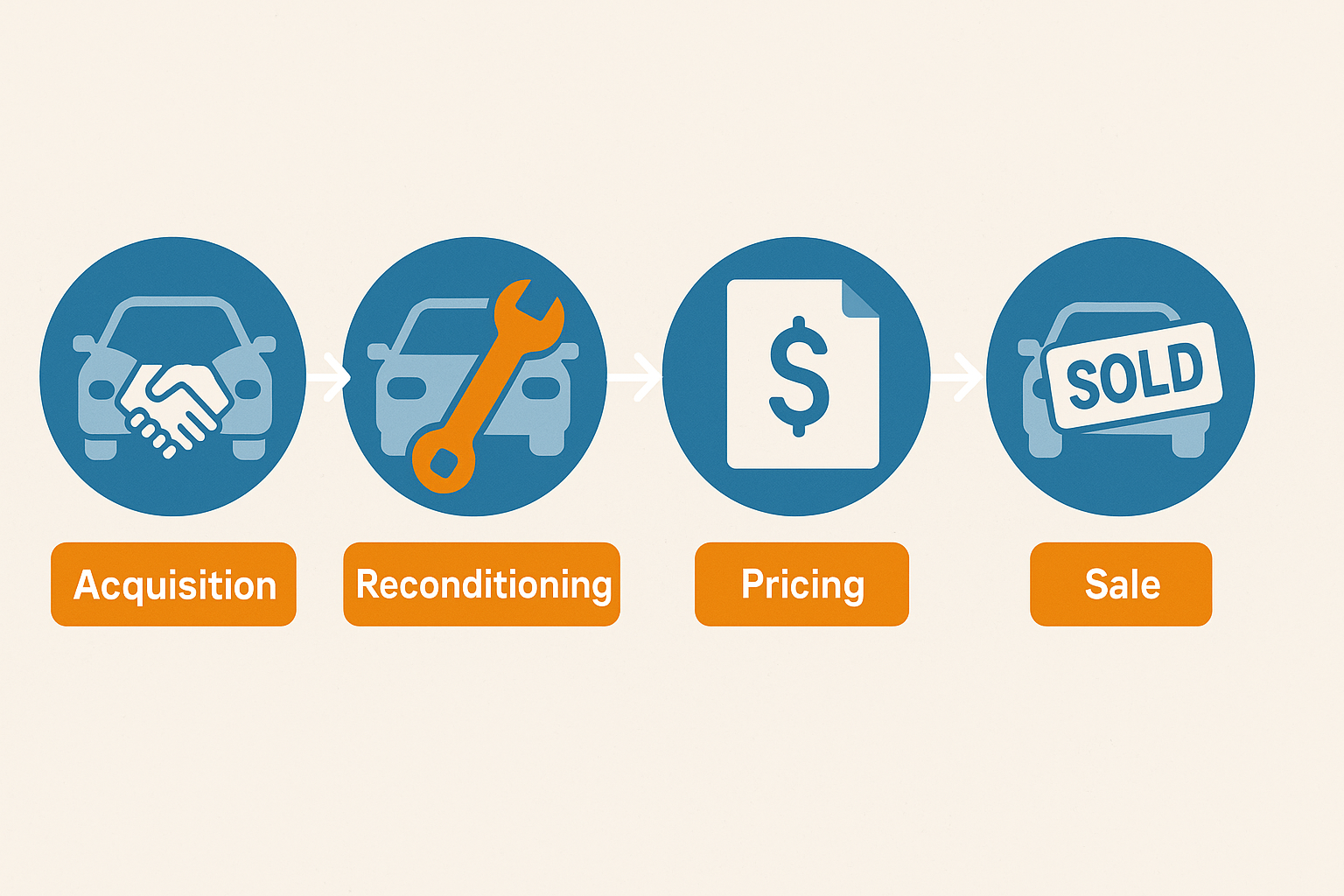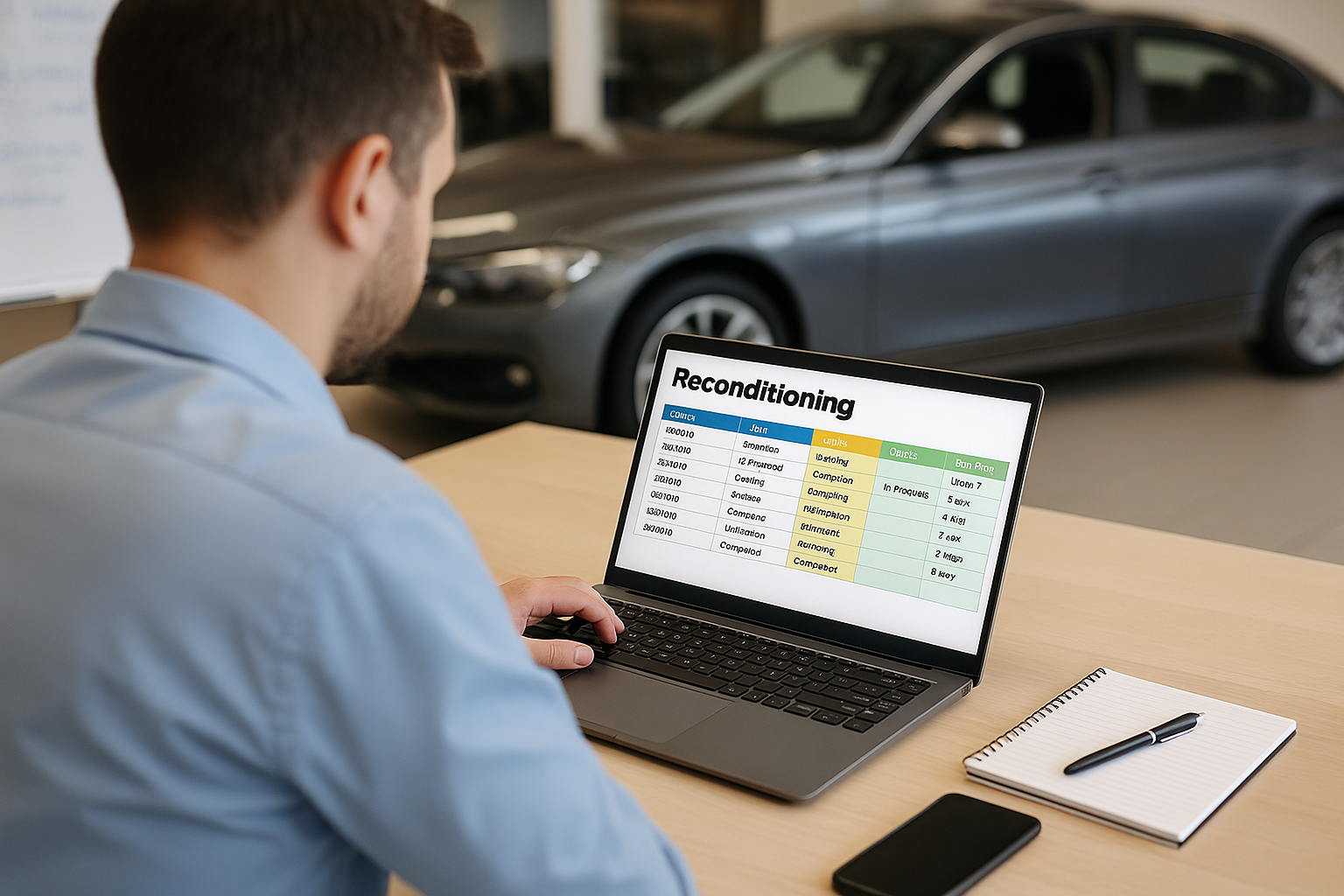Using the right inventory tracking methods is essential to ensuring operational efficiency and profitability. Proper inventory management allows dealerships to keep track of incoming and outgoing vehicles, monitor trends in vehicle pricing, and ensure that the right cars are always on the lot. With the rise of advanced technology, car dealers now have access to sophisticated software tools. It promotes streamline inventory tracking and enhance operational efficiency. This article explores the top inventory tracking methods and software solutions that help car dealerships stay competitive in the market.
Why Inventory Tracking Matters for Dealerships:
Effective inventory management directly impacts a dealership’s ability to maximize profit margins. It also keep inventory fresh, and avoid overstocking or understocking vehicles. Poor inventory tracking can lead to missed opportunities, mispricing, or even losing track of valuable assets. Car dealerships that implement top-notch inventory tracking methods can:
- Maximize Profits: Accurately tracking inventory allows dealerships to sell vehicles at the optimal time based on market demand.
- Streamline Operations: With proper inventory tracking in place, sales, service, and reconditioning teams can work together efficiently. It may also help reducing downtime between when a car arrives at the dealership and when it’s ready for sale.
- Improve Customer Satisfaction: When dealerships have a clear picture of what’s on the lot and what’s coming in, they can better serve their customers by offering the right vehicle at the right time.
Common Inventory Tracking Challenges:
Despite the importance of inventory management, many dealerships face several challenges when it comes to tracking vehicles accurately:
- Manual Errors: Dealerships that rely on manual processes, such as spreadsheets or paper records, are more prone to human error. A small mistake can lead to significant financial losses.
- Lack of Real-Time Visibility: Without real-time inventory tracking, dealerships may not know what vehicles are available or when they’ll arrive, leading to missed sales opportunities or longer holding times for unsold cars.
- Integration Issues: Many dealerships use multiple systems for different functions (sales, service, reconditioning, etc.), and these systems don’t always communicate well, leading to inventory inaccuracies.
With these challenges in mind, adopting modern inventory tracking solutions becomes crucial for dealerships to thrive in today’s competitive market.
Top Inventory Tracking Methods for Dealerships:
Here are some of the most effective methods and tools for tracking used car inventory in a dealership:
1. Dealership Management Software (DMS):
A Dealership Management System (DMS) is the backbone of most car dealerships. It integrates multiple aspects of dealership operations, including inventory management, sales, service, and accounting. A DMS provides a centralized platform where dealerships can track all vehicle data, from acquisition to sale.
- Features: DMS software typically includes tools for tracking vehicle inventory in real-time, managing customer information, handling financial transactions, and generating reports on sales and performance.
- Advantages: One of the biggest benefits of using a DMS is that it integrates all aspects of dealership operations. It reduces manual data entry and helps avoid errors in vehicle tracking. It also enables real-time updates, meaning dealers always have the latest information on their inventory.
- Popular DMS Solutions: Some well-known DMS providers include Dealertrack, Reynolds & Reynolds, and Autosoft. These platforms offer comprehensive solutions tailored to the needs of car dealerships.
2. VIN Scanning Technology:
VIN (Vehicle Identification Number) scanning is an increasingly popular method for tracking used car inventory. It allow dealers to quickly and accurately input vehicle data into their systems by scanning the unique VIN on each car. This process ensures that all vehicles are tracked with the correct information, from make and model to year and mileage.
- Features: VIN scanning tools are often integrated with dealership management software or inventory platforms. These tools allow dealerships to quickly scan incoming vehicles, whether they’re being purchased, traded in, or brought in for service.
- Advantages: By reducing manual entry, VIN scanning minimizes the chances of errors and speeds up the inventory process. This is especially useful for larger dealerships with high volumes of inventory turnover.
- Popular Tools: Carketa’s VIN scanning feature integrates with its market intelligence and reconditioning platforms, making it easy for dealers to track cars and streamline appraisals, reconditioning, and sales.
3. Automated Inventory Management Software:
Beyond traditional DMS solutions, there are specialized software platforms focused solely on inventory management. These platforms offer more advanced tracking features and are often designed to work alongside a DMS, providing additional functionality for dealerships that need more robust tracking options.
- Features: Automated inventory management software can track vehicle locations, monitor how long a car has been on the lot, send alerts when vehicles need to be moved or serviced, and provide real-time updates on inventory status.
- Advantages: By automating the tracking process, this software can reduce the time spent on manual tasks and improve accuracy. Dealers can also set thresholds and alerts to avoid overstocking or understocking vehicles.
- Popular Solutions: Some specialized inventory management tools include vAuto and DealerSocket. These platforms offer additional features like market pricing tools, reconditioning workflows, and sales analytics that help dealerships maintain an optimal inventory mix.
4. Market Pricing and Valuation Tools:
Market pricing and valuation tools, such as Carketa, Black Book, or Kelley Blue Book, allow dealers to not only track inventory but also determine the best prices based on current market conditions. These tools pull data from auctions, sales, and market trends, giving dealers real-time insights into the value of their inventory.
- Features: These tools help dealerships set competitive prices by comparing their inventory with similar vehicles in the market. They also track the performance of individual vehicles, showing how long each car has been on the lot and whether pricing adjustments are needed.
- Advantages: By integrating market pricing tools into their inventory management process, dealerships can stay competitive and ensure they are offering the right price at the right time. This leads to faster sales cycles and increased profitability.
- Popular Solutions: Carketa is an excellent example of an integrated inventory tracking tool that also provides valuation and market insights. It helps dealers monitor inventory, manage reconditioning, and set prices based on real-time market data.
Best Practices for Tracking Used Car Inventory:
While using the right software and tools is essential for effective inventory tracking, there are additional best practices dealerships should follow to optimize their processes:
- Regular Audits: Conduct regular inventory audits to ensure the information in your tracking system matches the actual vehicles on your lot. This can help identify discrepancies early and prevent costly mistakes.
- Real-Time Tracking: Make sure your inventory management software offers real-time updates so that you always have an accurate picture of what’s on your lot and what’s coming in or going out.
- Integration Across Departments: Ensure that your inventory tracking system is integrated across departments (sales, service, reconditioning). This ensures that all teams have access to the same information and can collaborate more effectively.
- Use Alerts and Automation: Take advantage of automated alerts and reports that notify you when vehicles have been on the lot too long or when it’s time to reprice or move a vehicle. These tools help you stay proactive and avoid letting valuable inventory sit unsold.
Conclusion:
Tracking used car inventory efficiently is critical for car dealerships to remain competitive and profitable. By implementing modern tools like dealership management software, VIN scanning, and automated inventory management platforms, dealerships can improve operational efficiency, reduce errors, and ensure they always have the right vehicles on the lot. As inventory management continues to evolve with technology, dealers who adopt these methods will be better positioned to succeed in an increasingly competitive market.
Explore related articles to learn more about software solutions for car dealerships:
- How to Track Inventory Turnover for Maximum Profitability: A Guide for Car Dealers
- The Critical Role of Inventory Size in Dealership Profitability
- Top 10 Car Dealership Sales Strategies for Boosting Profitability and Customer Satisfaction
- Carketa Enhances Auto Finder with Profit Predictor to Boost Profitability





